This article was co-authored by Alan O. Khadavi, MD, FACAAI. Dr. Alan O. Khadavi is a Board Certified Allergist and a Pediatric Allergy Specialist based in Los Angeles, California. He holds a BS in biochemistry from the State University of New York (SUNY) at Stony Brook and an MD from the State University of New York Health Science Center at Brooklyn. Dr. Khadavi completed his pediatric residency at Schneider Children’s Hospital in New York, and then went on to complete his allergy and immunology fellowship and pediatric residency at Long Island College Hospital. He is board certified in adult and pediatric allergy/immunology. Dr. Khadavi is a Diplomate of the American Board of Allergy and Immunology, a Fellow of the American College of Allergy, Asthma & Immunology (ACAAI), and a member of the American Academy of Allergy, Asthma & Immunology (AAAAI). Dr. Khadavi's honors include Castle Connolly’s list of Top Doctors 2013-2020, and Patient Choice Awards "Most Compassionate Doctor" in 2013 & 2014.
There are 12 references cited in this article, which can be found at the bottom of the page.
wikiHow marks an article as reader-approved once it receives enough positive feedback. In this case, 100% of readers who voted found the article helpful, earning it our reader-approved status.
This article has been viewed 794,702 times.
Hives, also called urticaria, are itchy bumps that appear on your skin. They are often red and can range from being a few millimeters to several inches in diameter, and multiple hives can even appear to be connected. Most go away in about a day with home treatment. If you have hives that last more than a couple of days, you should get them checked by a doctor.[1]
Steps
Eliminating Your Trigger
-
1Remove possible triggers from your diet. You may want to keep a food diary of everything you eat before and after you make any changes. This will help you to identify the problem foods.[2] There are several foods that give some people hives:[3]
- Foods with vasoactive amines. These chemicals cause the body to release histamines, which can lead to hives. Foods containing them include shellfish, fish, tomatoes, pineapple, strawberries, and chocolate.
- Foods with salicylates. These are compounds that are similar to aspirin. Foods that have them include tomatoes, raspberries, orange juice, spices, and tea.
- Other common food allergens include peanuts, tree nuts, eggs, cheese, and milk.[4] Some people also find that caffeine and alcohol can trigger hives.[5]
-
2Consider whether you are allergic to something in your environment. If so, you may be able to get rid of your hives by minimizing your contact with these triggers. Some people react with hives to the following substances:[6]
- Pollen. If this is your trigger, you are most likely to experience hives during times of high pollen counts. Try to avoid going outside during these times and keep the windows to your house closed.
- Dust mites and animal dander. If you are allergic to dust mites, then keeping your environment extremely clean and dust-free may help. Try vacuuming, dusting, and washing regularly. Change your sheets so that you are not sleeping on dusty sheets or pet dander.
- Latex. Some people get hives in reaction to contact with latex. If you are a health care worker and think that latex may give you hives, try using latex-free gloves to see if your hives go away.
- Other chemicals (cleaning products, perfumes, etc.) can also cause hives if you are allergic.
Advertisement -
3Minimize your exposure to insect bites and stings.[7] [8] Some people react with hives to the chemicals insects leave in your body when they bite or sting. Some people experience severe allergic reactions and carry epinephrine injectors in case they get stung. If you work outside, you can reduce your exposure to bites and stings by:
- Avoiding beehives and wasp nests. If you see bees or wasps, don’t antagonize them. Instead, move slowly away and wait for them to fly away.
- Applying insect repellent to your clothes and any exposed skin you may have. Do not get these chemicals in your nose, eyes, or mouth. There are many products available, but those with DEET are generally effective.
-
4Shield your skin from harsh environmental factors. This may involve protecting yourself from extreme temperature fluctuations until your body adjusts to a new climate or using a stronger sunscreen. Some people have sensitive skin which can react with hives to any number of environmental factors including:[9]
- Heat
- Cold
- Sunlight
- Pressure on the skin
- Grass, poison ivy, and poison oak
-
5Discuss your medications with your doctor. Some medications may cause people to break out in hives.[10] If you think one of your medications is giving you hives, contact your doctor immediately. Do not stop taking it without consulting your doctor first. Your doctor may be able to recommend a different medication that will still treat your original condition but won’t give you hives. Medications that sometimes give people hives include:
- Penicillin
- Some blood pressure medications
- Aspirin
- Naproxen (Aleve)
- Ibuprofen (Advil, Motrin IB, and others)
-
6Consider your overall health status. Consult with your doctor to determine whether your hives could be a symptom of another underlying health condition. A wide range of conditions can give people hives. These include:[11]
- Bacterial infections
- Intestinal parasites
- Viral infections including hepatitis, cytomegalovirus, Epstein-Barr virus, and HIV
- Thyroid problems
- Immune disorders like lupus
- Lymphoma
- Reactions to blood transfusions
- Rare genetic disorders that influence the immune system and how blood proteins work
Applying Natural Remedies
-
1Soothe the irritated skin with cool compresses.[12] This will reduce the itching and help you not to scratch. You can:
- Wet a washcloth in cold water and lay it out over your skin. Leave it on until your skin feels less itchy.
- Apply an ice pack. If you use ice, wrap it in a towel so that you are not putting the ice directly onto your skin. Putting the ice directly onto your skin increases your risk of frostbite. If you don’t have an ice pack handy, you can use a package of frozen vegetables. Apply the ice for about 10 minutes before giving your skin a chance to warm up.
-
2Soak in a cool bath with a natural, anti-itch remedy. This is an age-old remedy against itching. Fill a bath with water that is cool, but not uncomfortable. Then, following the manufacturer’s recommended amounts, add one of the following remedies and soak for several minutes or until you get relief from the itching:[13]
- Baking soda
- Uncooked oatmeal
- Colloidal oatmeal (Aveeno and others)
-
3Wear loose, 100% cotton clothing to keep your skin cool and dry. Hives can be a result of skin irritation due to clothing that is tight and holds sweat against your skin. Loose clothing will help your skin breathe and avoid hives due to overheating and irritation.[14]
- Try not to wear scratchy fabrics, particularly wool or polyester. If you do wear wool, be careful not to have it lie directly on your skin. For example, if you wear a wool sweater, put a light shirt on underneath.
- Similar to how sweating can irritate your hives, taking hot showers or baths may also irritate them.
-
4Reduce stress. Some people break out in hives when they are under intense stress.[15] Consider whether you have experienced any stressful events in your life such as ending or starting a new job, a death in the family, moving, or having problems in your close relationships. If this is the case, learning to manage stress may make your hives go away. You can try:
- Meditation. Meditation is a relaxation technique in which you clear your mind. You take a few quiet moments to close your eyes, relax, and release stress. Some people repeat a single word or phrase (a mantra) in their head while doing it.
- Deep breathing. During this method, you concentrate on fully inflating your lungs. This forces you to relax and avoid the shallow breaths that people make when hyperventilating. Deep breathing can also help you to clear your mind.
- Visualizing calming images. This is a relaxation technique in which you imagine a relaxing place. It can be a real or imaginary place. As you envision this location, you move about the landscape and think about how it feels, smells, and sounds.
- Exercise. Getting regular exercise can help you relax, lift your mood, and improve your physical health. The Department of Health and Human Services recommends that people do at least 75 minutes of physical activity per week. This can include walking, running, biking, or playing sports. It is also recommended that people do strength training, like weight lifting, twice per week.[16] Consult your doctor before beginning any exercise.
Seeking Medical Help
-
1Call emergency services if you have breathing difficulties. Occasionally people may have trouble breathing or the sensation that their throat is closing when they get hives. If this occurs to you, it is a medical emergency and you should call an ambulance immediately.[17]
- If this occurs, the emergency responders will likely give you an epinephrine injection. This is a form of adrenaline and it should reduce the swelling quickly.
-
2Try antihistamines. These medications are available as both over-the-counter and prescription medications. They are the first line of treatment for hives and are effective at reducing itching and swelling.[18]
- Commonly used antihistamines include Cetirizine, Fexofenadine, and Loratadine. Diphenhydramine (Benadryl) is a commonly used over-the-counter antihistamine.[19]
- Antihistamines may cause you to feel sleepy so don't drive while taking them until you know how they affect you. Do not drink alcohol while taking them. Read and follow the manufacturer’s instructions and your doctor’s recommendations.
- Tell your doctor if you are pregnant. Antihistamines may not be safe for pregnant women.
-
3Ask your doctor about topical or oral steroids. These medications are usually prescribed when antihistamines don’t help. They reduce the hives by lowering your immune responses.[20] Start by applying a thin layer of topical steroid cream, such as 1% hydrocortisone, over your hives. If you have widespread hives, you may get prescribed treatment is a 3- to 5-day regimen of prednisolone.[21]
- Tell your doctor if you have any of the following conditions before taking corticosteroids to make sure they are right for you: high blood pressure, glaucoma, cataracts, or diabetes. Tell your doctor if you think you could be pregnant or you are breastfeeding.
- Side effects may include weight gain, mood alterations, and insomnia.
-
4Try additional medications to address hives that won’t go away. If you have hives that are resistant to treatment, your doctor will probably refer you to a skin specialist. You may also be given the option of trying additional medications. Tell the doctor if you are taking any other medications or are pregnant or breastfeeding.[22]
- Menthol cream. This can be applied topically to reduce itching.
-
5Discuss light therapy with your doctor. Some rashes respond to treatments of narrowband ultraviolet B phototherapy. This requires you to stand in a small room for a few minutes while you are exposed to light.[23]
- This treatment may not be effective right away. You would do two to five sessions per week and it may take 20 sessions before you see an effect.
- This treatment can lead to sunburns and may increase your risk of getting skin cancer.
Expert Q&A
Did you know you can get expert answers for this article?
Unlock expert answers by supporting wikiHow
-
QuestionWhat's the best way to treat hives?
 Alan O. Khadavi, MD, FACAAIDr. Alan O. Khadavi is a Board Certified Allergist and a Pediatric Allergy Specialist based in Los Angeles, California. He holds a BS in biochemistry from the State University of New York (SUNY) at Stony Brook and an MD from the State University of New York Health Science Center at Brooklyn. Dr. Khadavi completed his pediatric residency at Schneider Children’s Hospital in New York, and then went on to complete his allergy and immunology fellowship and pediatric residency at Long Island College Hospital. He is board certified in adult and pediatric allergy/immunology. Dr. Khadavi is a Diplomate of the American Board of Allergy and Immunology, a Fellow of the American College of Allergy, Asthma & Immunology (ACAAI), and a member of the American Academy of Allergy, Asthma & Immunology (AAAAI). Dr. Khadavi's honors include Castle Connolly’s list of Top Doctors 2013-2020, and Patient Choice Awards "Most Compassionate Doctor" in 2013 & 2014.
Alan O. Khadavi, MD, FACAAIDr. Alan O. Khadavi is a Board Certified Allergist and a Pediatric Allergy Specialist based in Los Angeles, California. He holds a BS in biochemistry from the State University of New York (SUNY) at Stony Brook and an MD from the State University of New York Health Science Center at Brooklyn. Dr. Khadavi completed his pediatric residency at Schneider Children’s Hospital in New York, and then went on to complete his allergy and immunology fellowship and pediatric residency at Long Island College Hospital. He is board certified in adult and pediatric allergy/immunology. Dr. Khadavi is a Diplomate of the American Board of Allergy and Immunology, a Fellow of the American College of Allergy, Asthma & Immunology (ACAAI), and a member of the American Academy of Allergy, Asthma & Immunology (AAAAI). Dr. Khadavi's honors include Castle Connolly’s list of Top Doctors 2013-2020, and Patient Choice Awards "Most Compassionate Doctor" in 2013 & 2014.
Board Certified Allergist
-
QuestionDo hives go away on their own?
 Alan O. Khadavi, MD, FACAAIDr. Alan O. Khadavi is a Board Certified Allergist and a Pediatric Allergy Specialist based in Los Angeles, California. He holds a BS in biochemistry from the State University of New York (SUNY) at Stony Brook and an MD from the State University of New York Health Science Center at Brooklyn. Dr. Khadavi completed his pediatric residency at Schneider Children’s Hospital in New York, and then went on to complete his allergy and immunology fellowship and pediatric residency at Long Island College Hospital. He is board certified in adult and pediatric allergy/immunology. Dr. Khadavi is a Diplomate of the American Board of Allergy and Immunology, a Fellow of the American College of Allergy, Asthma & Immunology (ACAAI), and a member of the American Academy of Allergy, Asthma & Immunology (AAAAI). Dr. Khadavi's honors include Castle Connolly’s list of Top Doctors 2013-2020, and Patient Choice Awards "Most Compassionate Doctor" in 2013 & 2014.
Alan O. Khadavi, MD, FACAAIDr. Alan O. Khadavi is a Board Certified Allergist and a Pediatric Allergy Specialist based in Los Angeles, California. He holds a BS in biochemistry from the State University of New York (SUNY) at Stony Brook and an MD from the State University of New York Health Science Center at Brooklyn. Dr. Khadavi completed his pediatric residency at Schneider Children’s Hospital in New York, and then went on to complete his allergy and immunology fellowship and pediatric residency at Long Island College Hospital. He is board certified in adult and pediatric allergy/immunology. Dr. Khadavi is a Diplomate of the American Board of Allergy and Immunology, a Fellow of the American College of Allergy, Asthma & Immunology (ACAAI), and a member of the American Academy of Allergy, Asthma & Immunology (AAAAI). Dr. Khadavi's honors include Castle Connolly’s list of Top Doctors 2013-2020, and Patient Choice Awards "Most Compassionate Doctor" in 2013 & 2014.
Board Certified Allergist
-
QuestionCan strep throat cause hives?
 Jennifer Boidy, RNJennifer Boidy is a Registered Nurse in Maryland. She received her Associate of Science in Nursing from Carroll Community College in 2012.
Jennifer Boidy, RNJennifer Boidy is a Registered Nurse in Maryland. She received her Associate of Science in Nursing from Carroll Community College in 2012.
Registered Nurse Strep throat is caused by strep bacteria. Sometimes with strep throat, a skin rash develops that begins in the neck and chest area and may spread over entire body. This condition is known as Scarlet Fever. If you suspect you have strep throat or if you develop a rash with sore throat, see your doctor right away. Both conditions need to be treated with antibiotics.
Strep throat is caused by strep bacteria. Sometimes with strep throat, a skin rash develops that begins in the neck and chest area and may spread over entire body. This condition is known as Scarlet Fever. If you suspect you have strep throat or if you develop a rash with sore throat, see your doctor right away. Both conditions need to be treated with antibiotics.
Warnings
- Tell your doctor about all medications, herbal remedies, and supplements you are taking. This is important because they can interact with other medications. This is especially important if you are pregnant, breastfeeding, or treating a child.⧼thumbs_response⧽
- Read and follow the manufacturer's instructions and any advice given to you by your doctor.⧼thumbs_response⧽
References
- ↑ https://www.medicalnewstoday.com/articles/157260#symptoms
- ↑ Alan O. Khadavi, MD, FACAAI. Board Certified Allergist. Expert Interview. 29 July 2020.
- ↑ https://acaai.org/allergies/allergic-conditions/skin-allergy/hives/
- ↑ https://www.foodallergy.org/living-food-allergies/food-allergy-essentials/common-allergens
- ↑ https://www.nhsinform.scot/illnesses-and-conditions/skin-hair-and-nails/urticaria-hives
- ↑ https://acaai.org/allergies/allergic-conditions/skin-allergy/hives/
- ↑ https://acaai.org/allergies/allergic-conditions/skin-allergy/hives/
- ↑ https://www.nlm.nih.gov/medlineplus/ency/article/000845.htm
- ↑ https://acaai.org/allergies/allergic-conditions/skin-allergy/hives/
- ↑ https://www.nlm.nih.gov/medlineplus/ency/article/000845.htm
- ↑ http://www.nhs.uk/Conditions/Nettle-rash/Pages/Causes.aspx
- ↑ https://www.medicalnewstoday.com/articles/157260#home_remedies
- ↑ https://www.medicalnewstoday.com/articles/157260#home_remedies
- ↑ https://www.medicalnewstoday.com/articles/157260#home_remedies
- ↑ http://www.nhs.uk/Conditions/Nettle-rash/Pages/Causes.aspx
- ↑ https://www.health.harvard.edu/staying-healthy/exercising-to-relax
- ↑ https://www.nlm.nih.gov/medlineplus/hives.html
- ↑ Alan O. Khadavi, MD, FACAAI. Board Certified Allergist. Expert Interview. 29 July 2020.
- ↑ https://www.nlm.nih.gov/medlineplus/ency/article/000845.htm
- ↑ Alan O. Khadavi, MD, FACAAI. Board Certified Allergist. Expert Interview. 29 July 2020.
- ↑ http://www.nhs.uk/Conditions/Nettle-rash/Pages/Treatment.aspx
- ↑ http://www.nhs.uk/Conditions/Nettle-rash/Pages/Treatment.aspx
- ↑ https://pubmed.ncbi.nlm.nih.gov/2416176/
About This Article
If you're experiencing severe symptoms from hives like trouble breathing or you feel your throat closing up, call an ambulance immediately. If your symptoms are mild, you can get rid of them by applying a cool, damp cloth to soothe your skin wherever the hives appear. Make sure your clothing is loose and breathable to reduce further irritation from sweaty skin. You can also take a bath with natural anti-itch ingredients, such as baking soda or oatmeal. If you’re still not getting relief, an over-the-counter antihistamine may help. To learn more from our Registered Nurse co-author, like how to avoid the things that trigger your hives, keep reading the article!
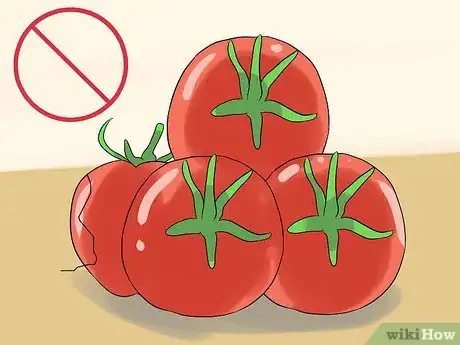

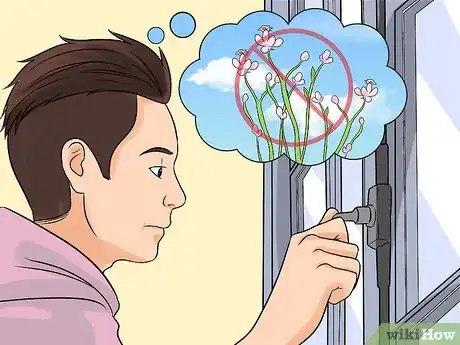
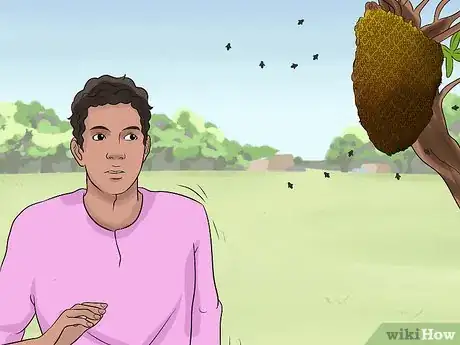
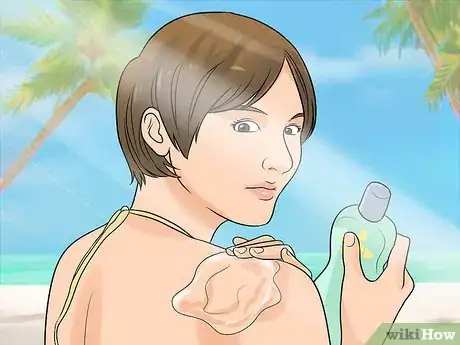
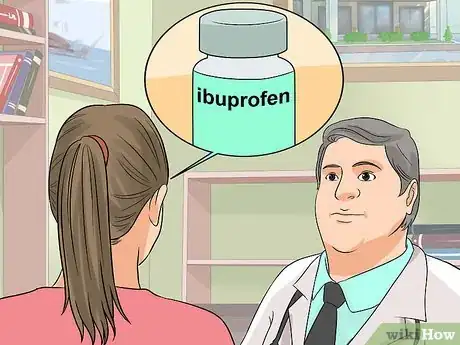
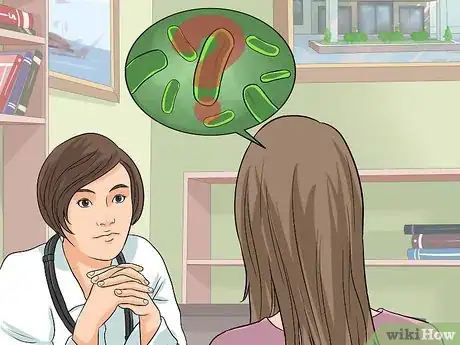
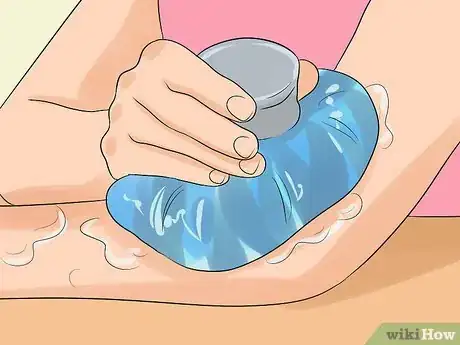
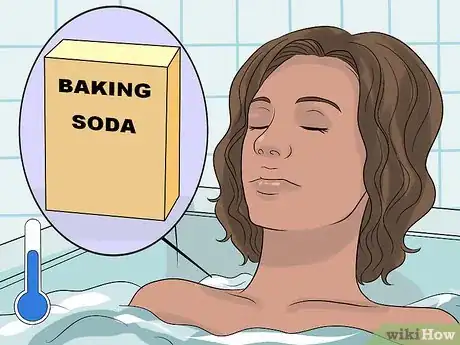
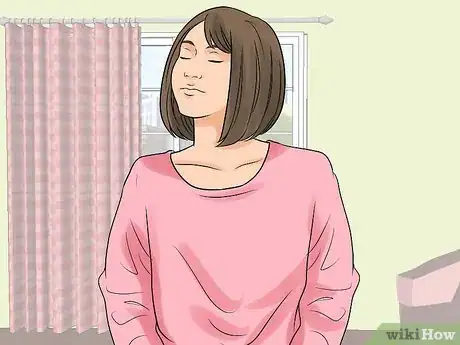
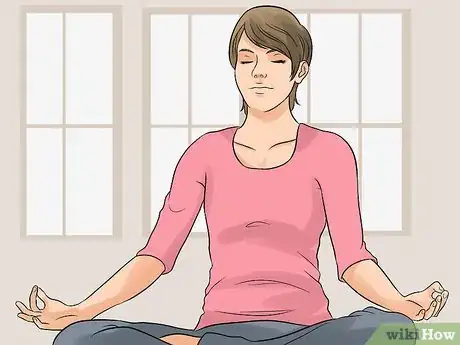
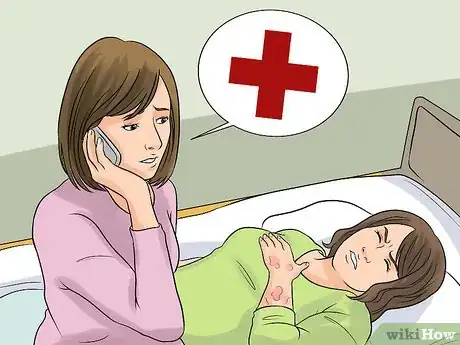
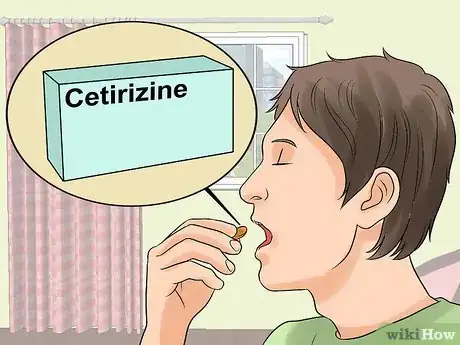
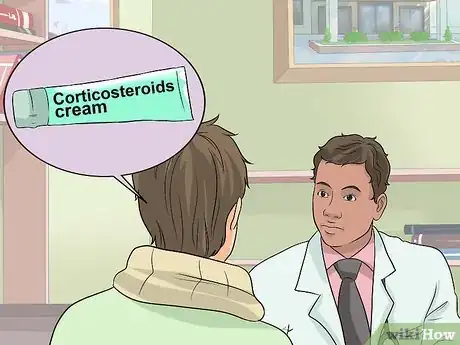
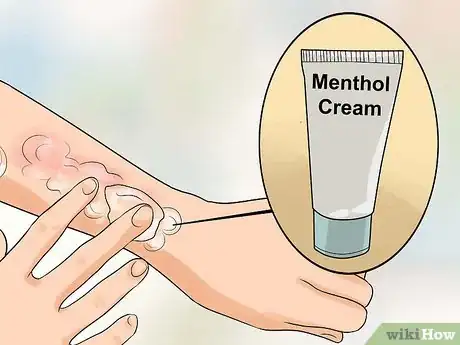


-Step-16-Version-3.webp)
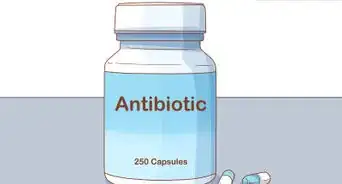
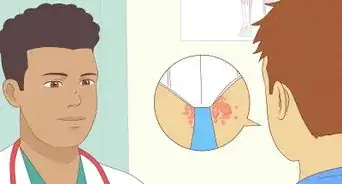


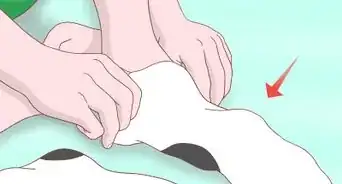
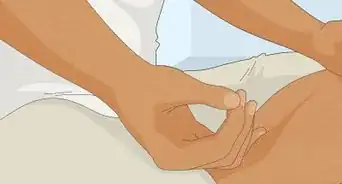
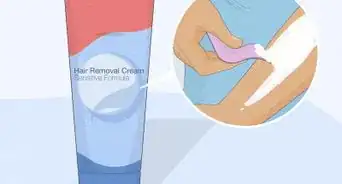
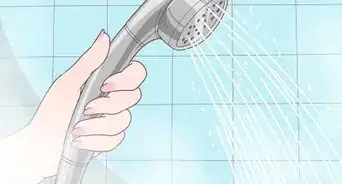
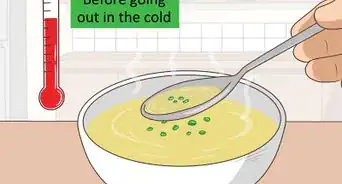
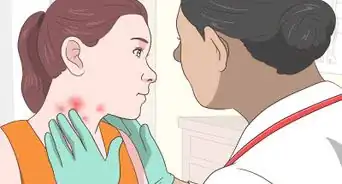

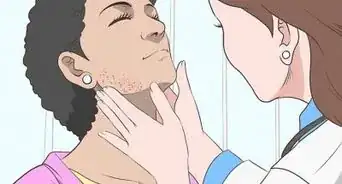









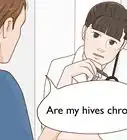
-Step-16-Version-3.webp)
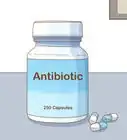
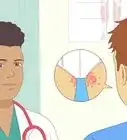




































Medical Disclaimer
The content of this article is not intended to be a substitute for professional medical advice, examination, diagnosis, or treatment. You should always contact your doctor or other qualified healthcare professional before starting, changing, or stopping any kind of health treatment.
Read More...